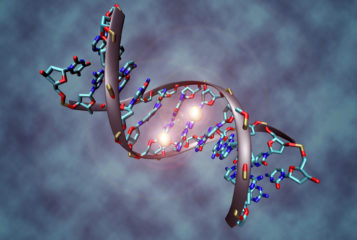The recent demonstration that friends have more of their genetic makeup in common than two people picked at random from their population has been making the headlines (see BioNews 934). The research, published in PNAS was based on data from 5500 American adolescents of European origin participating in the National Longitudinal Study of Adolescent to Adult Health (Add Health).
It has been known for a while that spouses share more similarity in their genomes than expected by chance. The Add Health study showed in non-Hispanic whites that genetic similarity between friends is about two-thirds of that found between spouses, but more than strangers. The study also tried to tease out how much was down to unconscious attraction between individuals, and how much was associated with the shared school and social environment. They found classmates were about half as genetically similar as friends, but still significantly more similar than unaffiliated individuals.
However, the reporting of this study has so far largely focused on why your friends share more of your genes and DNA variants than expected. This similarity in genetics may all makes sense given the old proverb, 'birds of a feather flock together'. But there is also another rather spooky side to this study and the whole field of social genetic effects. This is that how you end up involves not just the genes you inherited but also the genes of significant others. The authors end their summary of the significance of their paper by saying: 'We also find evidence of a "social-genetic effect" such that the genetics of a person's friends and school mates influenced their own education, even after accounting for the person's own genetics.'
If you are comfortable with the idea that genes carry information that makes you who you are and what you look like, promoted on respectable educational web sites, then you may be rather disconcerted by these recent findings. After all many people regard their genetic makeup as a key element of their individuality. But now we have a study that concludes that some of your own educational achievement is down to your friends' genes rather than your own.
Hang on a minute, who are we talking about here? What a nonsense, you might be saying. But calm down, this feeling is just an insidious side-effect of the geno-centric climate we are living in. To redress the balance, I am reminded of hearing the diplomat Alexander Downer discuss how one got to understand a country to which one had been posted. 'They feel as they feel because of their own history and experience. People are defined by these experiences.'
We are all defined in part by our history and experiences. It is common to hear people talk of a particular school teacher who was a key influence on their career path or some other aspect of their life. Obviously, there is no direct cross-talk between the teacher's DNA and that of the pupil. Genes have their influence through their expression in terms of dictating which proteins are produced when and in which tissues during development and thereafter, often in response to social or physical environmental factors. Gene expression is moulded through additional epigenetic regulation to eventually influence developmental variation in phenotype. Phenotypes range from some basic physiological response to complex traits like personality.
The Add Health paper does not discuss any of these processes by which a particular genotype might influence other people through its phenotypic expression. The word epigenetics is not mentioned at all. It is only dealing with correlations and rightly points out that their study does not inform the direction of influence between friends or schoolmates. The pupil also contributes to the motivation generated by a particular teacher, but the causal pathways are unclear and probably complex.
A recent study in the journal PLOS Genetics of social genetic effects in mice detected associations between a trait of one mouse and the genetic makeup of its cage mates. It turned out that such social genetic effects explained up to 29 percent of variation in anxiety, wound healing, body weight and immune function, and in several cases contributed more to phenotypic variation than the mouse’s own genes. This phenomenon appears to hold for both in-bred and out-bred strains. Social genetic effects, of course, can play both ways in terms of social cohesion and cultural continuity, but much is likely to be mediated by epigenetics.
The simplest example of a genotype becoming an environmental influence on another person comes from the mother-baby relationship. The maternal genotype also contributes to the early nutritional environment of progeny through its influence on maternal metabolism during pregnancy. This is best exemplified in studies on insulin sensing and fetal growth, through which a common variant of the glucokinase gene alters fasting glucose and birth weight.
Here we know the causal pathway from mother to baby, and also some of the other factors – genetic or otherwise – that might modify the outcome in the baby. But take a step back and imagine just how challenging it will be to understand what is going on between free-living, unrelated friends as they grow up. Yes, it really is going to be complicated!





Leave a Reply
You must be logged in to post a comment.